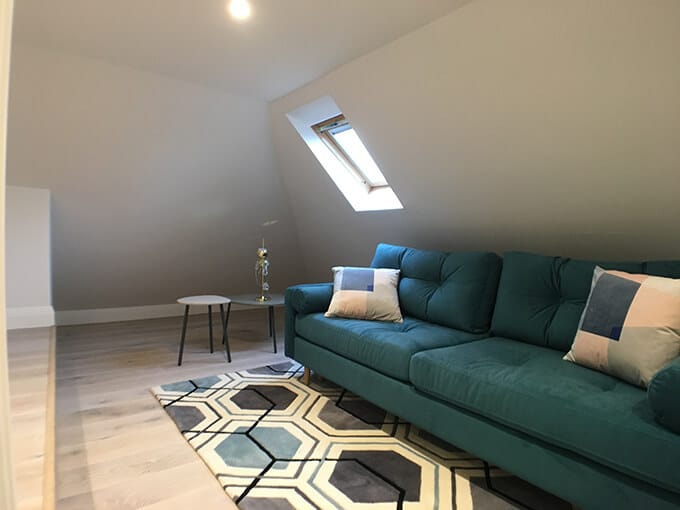Table of Contents
Loft conversions are a common thing for most of the UK homes. If you’re thinking of making proper use of your attic space or if you need additional headroom and floor space in your home, then a loft conversion would be your go-to solution. Not forgetting the fact that loft conversions are a great way of adding value to your property. Luckily for you, we shall discuss several types of loft conversions you can choose from.
We shall also look at several factors and things essential in determining the type of loft conversion suitable for your home. Among these, the type of roof on your property is one of the most important things. We’ll also look at the pros and cons of some of these loft conversion options.
The most important thing is first determining whether your loft space is suitable for conversion. For a loft extension, the most important thing is to make use of that underutilised area in your house. Although it is very rare to get a loft space that cannot be converted, there are a few adjustments that can be done to accommodate a conversion.
We always have the best solutions for London loft conversions, ensuring that our customer’s needs are met. If you find it difficult to tell whether your property is fit for conversion, our loft conversion specialists are always ready to help and find you a viable solution.
Loft conversions are always a great plan when you’re thinking of home improvement. Your budget, available area, size and location of your property are among the things that determine the type of loft conversion suitable for your home. The most common loft conversion roof types include the following:

This happens to be the most common type of conversion for most homes. A dormer can be built in almost any type of building. Most of the time, a dormer loft conversion doesn’t require any planning permission, although there are situations where it is necessary. It is always advisable to consult with your local authorities to be sure.
The dormer conversion is constructed in a way that it projects from the plane of a sloping roof. It is built with vertical walls and a horizontal ceiling, providing a more spacious room for your house. For a cohesive look, the dormer should match the existing roof. Below are some of the common designs that you can choose from:

The mansard loft is most common in London and most urban areas, especially terraced houses. This type of conversion is constructed by raising your roof’s sloping side to an almost vertical side. It is similar to the flat dormer since it has a flat roof, although the windows are housed in a smaller dormer.
Most individuals prefer the mansard loft conversion since it is aesthetically appealing and also provides maximum space. It also results in a change in the roof design of the house. You will need to acquire planning permission from your local authorities to have a mansard loft in most cases.

With the hip to gable loft conversion, the existing roof’s sloping side is changed to a flat gable end. It is a convenient way to increase the relatively small usable space in hipped roof houses. Although not a lot, the additional space is usually big enough for a play area, an office or a lounge.
A hip to gable conversion is suitable for any detached or semi-detached property, as well as bungalows and chalets. The duration taken to construct this type of conversion depends on the project’s scale and the size of the team working on it. Multiple options available such as gable hip, hipped, half-hipped, dutch gable, cross hipped roof and hip to gable loft conversion.

Velux extensions are the easiest type of conversion to build, and it also takes the shortest duration. Commonly known as roof light loft conversion, the design is relatively easy to install. Here the existing space is not altered or expanded in any way.
A window is added, and the floor is reinforced to create a comfortable living space. The roof might need minimum altercations for the Velux window to fit, making it relatively cheaper than the other loft conversion types.

With the many types of loft conversion designs available, you might find it challenging when deciding the most suitable design for your home. We shall list down some of the essential factors you should consider when making a choice:
Different loft conversions have individual timescales involved. The duration taken to construct a loft convert majorly relies on the design and type of loft. There are also three important phases of work that play an important role in influencing the project duration. These are:
In most cases, planning permission is necessary where the conversion does not fall under permitted development. It is advisable to consult with your local authorities and make sure that your proposed project fully adheres to the permitted development specific conditions and limitations. Below are some circumstances where you will need planning permission:
The points above highlight some of the circumstances where you will need planning permission for your conversion. Although there are occasions where you may not require planning permission, it is always good to confirm with your local authority to avoid any problems while the construction is underway.
We have looked at different types of loft conversion options that you might consider for your property and their advantages and disadvantages. The other thing is the different factors that might influence your decision when deciding on a suitable conversion. These are just some of the basic things you need to know if you’re thinking of loft extension.
It is also important to note that building regulations approval is necessary for any types of loft extension to ensure that the structure is safe. Here at eLoft loft experts are ready to help with your lofts conversions and choose the most suitable style for your home. You will also be able to make the most of your underutilised roof space and add value to your property.
Loft